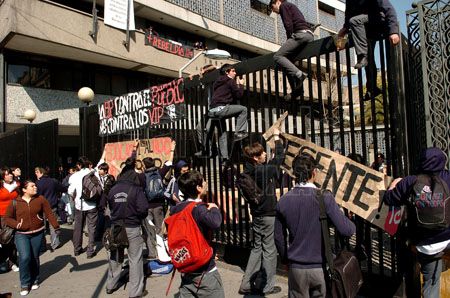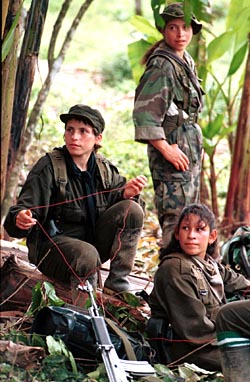By Emilee Gaebler
Impunity Watch Reporter, South America
BOGOTÁ, Colombia – Four teachers have been murdered in Colombia over the past two months. On May 15, Dionis Alfredo Sierra Vergara was killed; on May 26 Carlos Julio Gómez was shot. Freddy Antonio Cuadrado Núñez was murdered on May 27 and Alejandro José Peñata López on June 20.
Vergara was shot three times outside of the school at which he taught. Witnesses said that he was attacked as he stepped outside to take a phone call. Gómez was injured by gunmen early in the morning on May 26. He was later taken to a nearby hospital where he passed away three days later on May 29.
Núñez was shot in the head by a hired gunman as he was celebrating his 46th birthday. López disappeared after leaving the school he taught at. His body was hung with barbed wire and found days later; it also showed signs of being tortured.
The four teachers were members of the teachers’ unions ADEMACOR (Asociación de Maestros de Córdoba) and SUTEV (Sindicato Único de Trabajadores de la Educación del Valle). Their murders are the most recent in a long line of trade unionist slayings. Since December of 2008 there have been 20 teachers murdered in the Department of Córdoba alone.
After the killing of Vergara in early May, Domingo Ayala, president of ADEMACOR, declared that he was going to make a complaint to the International Criminal Court. For Ayala, the continuing pattern of unionist killings shows that no deterrent has been provided by Colombia.
The International Trade Union Confederation (“ITUC”) called for immediate government action saying, “[t]he context of almost total impunity for these murders has led to an alarming humanitarian crisis in the education sector and has put teaching and trade union actions at risk, [it] clearly refutes the Colombian governments’ statements in international forums about human rights’ improvements.”
The United Steelworkers also condemned the Colombian government’s lack of action in bringing those responsible to justice. They expressed outrage that U.S. representatives are considering passing the Free Trade Agreement between the two countries when the Colombian government is unable to address the brutality against unionists in its own country.
For more information, please see;
Colombia Reports – 17 Murdered Unionists a Grim Record for Colombia: US Union – 30 June 2011
Teacher Solidarity – Two More Teachers Murdered in Colombia – 27 June 2011
Education International – EI Condemns the Murders of More Teachers in Colombia – 26 June 2011
CNN World – Union Group Slams Colombia Over Recent Killings of 2 Teachers – 24 June 2011
Colombia Reports – Teacher’s Murder in North Colombia Sparks Complaint to ICC – 17 May 2011




